The third-gen Dodge Viper and Ram SRT-10 are an old-time good time
“You should drive these two—you’d be surprised how much they have in common.”
I ogled Rocky Yusi’s 2004 Ram SRT-10 and his dad Rick’s ’03 Viper SRT-10 parked next to it, their mirror-like black finishes reflecting the longing in my face.
Sure, the two share one of the coolest drivetrains of the last 30 years, but just how much overlap does that create between a burly sports car and a muscle truck? That was my initial thought, followed immediately by another: Never you mind, Eddy. That’s an offer you don’t need to hear twice.
The Yusis have shared their love of cars for over 40 years, beginning by bonding over Sunday ice cream trips in Rick’s Corvettes back in the ’80s and ’90s. When Rocky was old enough, he joined his dad in operating Rick Yusi Automotive in Strongsville, Ohio. Rocky and I became friends after the two graciously offered two of their Corvettes for a Hagerty Drivers Club magazine feature story. He invited me over to see some of their other immaculately cared-for toys, and among some cool and classic kit, these two Mopar siblings stand out.
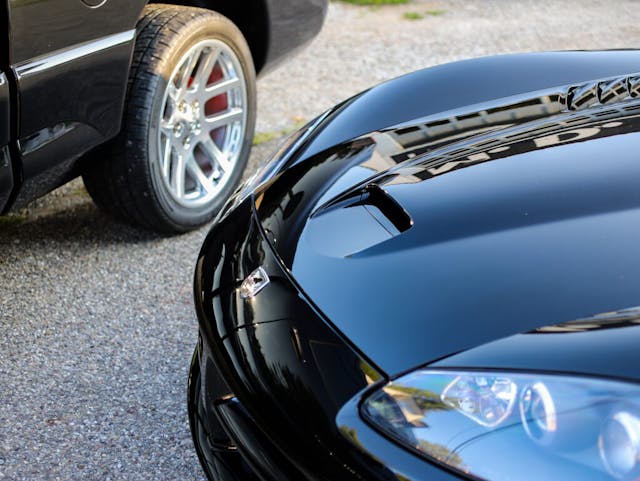
For good reason. Like me, Rocky came of age in the ’90s and 2000s, when the Viper brought brute-force Shelby Cobra-style performance back to American streets. As for the Ram, well, it was the baddest truck on the planet when it debuted. But what was it that brought the two together? I was about to find out.
Muscle truck

Dodge seems to have figured out better than most the sense of character that goes along with infusing cars with brawny, raw powerplants. Dropping the 500-horse 8.3-liter Viper V-10 and associated Tremec T-56 six-speed manual into a pickup in 2004 was, in hindsight, a very Dodge thing to do. There was room in the engine bay, so why not? While they were at it, they adorned the Ram with a hood, lower front fascia, and wheels that mimicked the recently-released third-gen Viper, along with aggressive lower body moldings and a rear wing. Toss in suspension improvements and some very hefty brakes, and a 154-mph supertruck was unleashed to the masses.
Rick bought the black 2003 Viper new, and when the Ram debuted a year later, Rocky saw an opportunity. “For me, the Ram was a way to get that great engine and some of the personality that makes my dad’s car so special. I was in my 20s and couldn’t afford the 80-grand sticker for the Viper, but I had saved up enough that I could pick up the Ram.” Rocky wheeled and dealed his way into a good price from a dealer south of Canton, Ohio, and brought home this gorgeous black Ram SRT-10.
Rocky tosses me the Ram keys for the first part of our evening drive down to Cuyahoga Valley National Park. I climb into the commanding, thick armchair of a driver’s seat. The high perch, low door sills, and expansive view across the muscular hood give a tall, airy feeling completely at odds with the street-driven speed demons I’m used to. I’m immediately smitten.
Palming the thick ball atop a Hurst shifter that feels three feet tall, I imagine myself within one of Ed “Big Daddy” Roth’s muscle car illustrations, with the Ram billowing tire smoke and exhaust as it rears up to launch. Reality’s not far off—the Ram’s a cartoonish brute in the best of ways. Drop the clutch, stomp on the gas, and it’s all theatrical weight transfer, earth-moving torque, and guttural roar. I pull the gigantic shifter through the long (but surprisingly precise) throw into second and grin at the tire bark and that next push into the seat. The Ram SRT-10 makes you wish for stoplights spaced just far enough apart to wind it out through the first few gears, only to slow it down and do it again.
It’s a smile machine in the great American muscle tradition, one of a long line of Dodges built because the right people said, “We can, so we should.” Which is, after all, the best reason to create anything.
Yes, it’s still a 20-year-old pickup. It flexes and shakes over bumps and undulations, and though the 305-section tires grip well, numb steering and plenty of body roll make you think twice about keeping your foot down when the roads are anything but straight. But that’s ok—there’s only so much a 5100-pound truck can do, and what it lacks in poise this rig more than makes up for in personality.
To add an ounce (actually, 7664 ounces, or 479 pounds over the Regular cab) of practicality, Dodge expanded its SRT-10 pickup offerings in 2005 with a Quad cab version. Offered in automatic only and extending the wheelbase some 20 inches (the bed retains the same dimensions as the Regular cab model), the Quad cab allowed buyers to select a hot rod V-10 pickup that could seat six and tow a Viper. The decision made sense—in addition to the truck being a hit on its own, Dodge cited significant demand from Viper owners who wanted to tow their car to the track. That said, nearly two decades on, the manual-only Regular cabs hold an edge in value. The three-model-year production run yielded 9527 Ram SRT-10s across the two body styles, with the Regular cab models making up 5533 units.
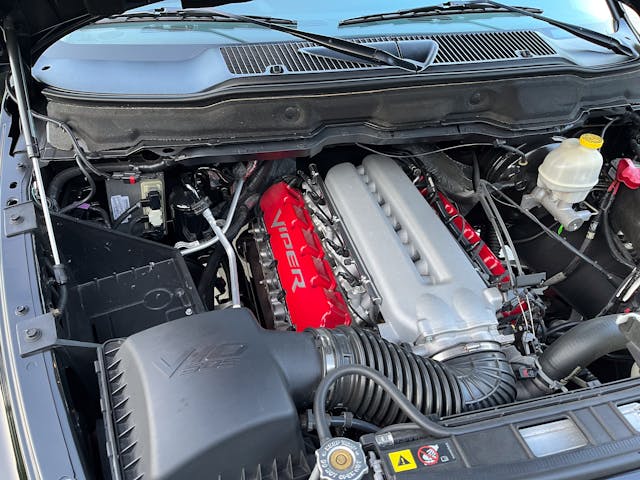
Noting this relative rarity and outlandishly wonderful drivetrain, we picked the Ram SRT-10 for our Bull Market list four years ago (2019). Its ascent preceded the pandemic, but values really started firing on all ten cylinders in 2021 and peaked in July 2022, at $71,000 for a #1 (concours) condition example. Values settled at the beginning of 2023 and have been stable since.
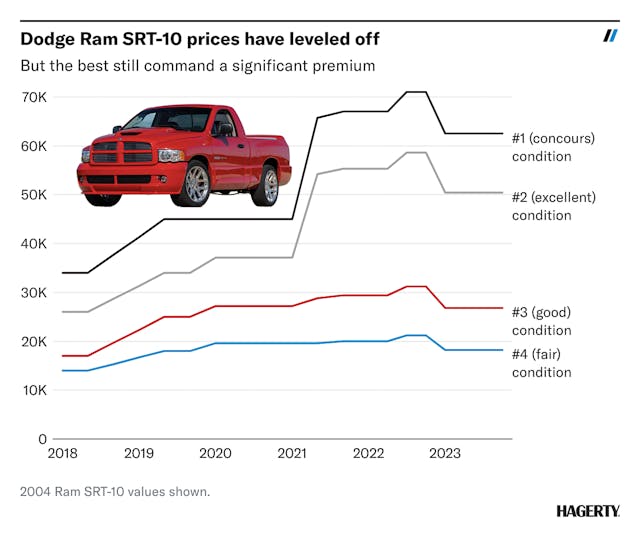
As you’d expect, many of these trucks have led enthusiastic lives, so be prepared to be patient if you’re looking for one as pristine as Yusi’s 8000-mile example. Values reflect the hard-to-find nature of excellent-condition vehicles—top-tier Ram SRT-10s can fetch between 50 and 60 grand, while driver-quality trucks come in at about half that.
Dodge’s 2000s muscle truck has broad interest across buyer demographics, with a quarter of insurance quotes sought coming from millennials, Gen Z making up 28 percent, and boomers still holding the lion’s share with 40 percent. Younger buyers are slowly making their way into the Ram SRT-10 market, up 3 percent over the last three years. After tonight’s drive, I understand why.
Brutish sports car
With the sun beginning to creep beneath the trees lining the hills to the west of the valley, my attention turns to the Viper. Setting aside the shared design cues, and despite the enormous platform differences, from the first few minutes in the Viper, it’s readily apparent these two are siblings—the kind that aren’t afraid to brawl to defend the Dodge family honor, even if they hit quite differently.

The unique hum and harmonics of the shared V-10 fills both vehicles with liveliness and raw urgency. When the third-gen Viper debuted in 2003, the engine got a bump to 8.3 liters (505 cubic inches) from the previous 8.0-liter unit, upping horsepower to 500 and torque to 525.

Surrounding that freshened engine is a ground-up redesign in a convertible-only platform (a coupe would eventually grace the third generation for the 2006 model year). This caused a stir among the Viper faithful, who saw some of the car’s refinements as a step away from the machismo of the original design brief. The Yusis, who came to Vipers by way of wishing that Rick’s 1990 Corvette ZR-1 had more differentiation from the base car, have a long-term ownership perspective on this. “Our ’94 R/T Viper has side curtains and the hardtop that you have to deal with,” explains Rocky. “It’s an incredible car, but the ’03 keeps everything that makes the Viper great and makes it that much more livable.” He’s right, especially by today’s standards. Arguably, though, their beautiful blue-with-white stripes ’96 GTS is the best of both worlds, but that’s a story for another day.
I open the servo-actuated, lightweight composite door and plunk myself down in the driver’s seat, carefully avoiding the still-hot sill. Before me sits a lot of plastic and some very-clearly-parts-bin HVAC and radio units, but more importantly a well-designed set of primary gauges and stack of easy-to-read auxiliary readouts. It’s a glove-like fit given the amply bolstered seats and thick center tunnel, but no one will feel claustrophobic with the top down.
Accelerating up the tight, windy pavement that exits the valley, the throat-clearing chop from the side pipes builds to a furious gargling bellow as the 345-section rear tires turn torque into forward progress. Brutal is the best word for this moment. Those sounds and that relentless push are enough to keep alive the Viper’s reputation as a beast to be wary of, all before getting to the first corner. But roll into that wonderfully firm brake pedal and position the car for the turn with the well-weighted steering, and in that moment you realize that maybe this car isn’t such a handful after all.
Despite the sensory drama, all the car’s inputs enable precise control. Power is easily and progressively meted out, and steering feel is significantly more communicative than that of a contemporary Corvette. Yes, it’s intense, but it’s also incredibly capable. If you rely purely on an electronic safety net to find the limit, you might be in trouble, but most will find the third-gen Viper an eager and even confidence-inspiring back road or track companion.
Like the Ram, however, this Viper is not without flaws. The pedal box, while wide, only accommodates a rock climber’s tiny toehold of a dead pedal. Sharp bumps elicit a crashy, harsh response from the chassis, and the big tires skip over uneven surfaces. And you’d better step wide over that sill. You accommodate these things, though, because you’re not going to find the same emotive experience anywhere else.
Enthusiasts of all ages have taken notice, too. Quotes sought from buyers skew younger than those for the Ram, with Gen X holding a majority share at 37 percent and younger buyers occupying a quarter of the market. We picked the 1996–2002 Viper to be a part of our 2020 Bull Market list, and when you stack recent prices and young buyer interest on top of the third-gen Viper’s visceral reputation, it looks sure to follow the early cars in their collectible trajectory.
Speaking of prices, top-quality cars began to separate themselves with an upward move that began before the pandemic, while solid drivers began their rise in 2021. This year has treated third-gen Vipers well, with nominal increases across all condition ratings.
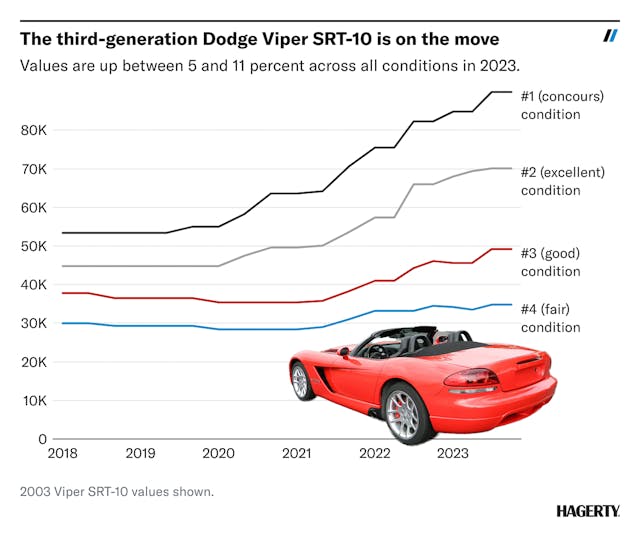
I pull back into Rocky’s garage and emerge from the Viper still giddy. At a time when enthusiasts beg for vehicles with soul, it’s hard to imagine two that straddle the line between an old-time good time and the modern era better than the Viper and Ram SRT-10s. And that’s why Rocky wanted to share them—for all their obvious differences, at their core they are rooted in the same notion of how a good car makes a driver fall in love with the moment. Both represent the promise of an occasion in every shift and a free giggle with every two strips of rubber. I won’t forget this pair anytime soon.
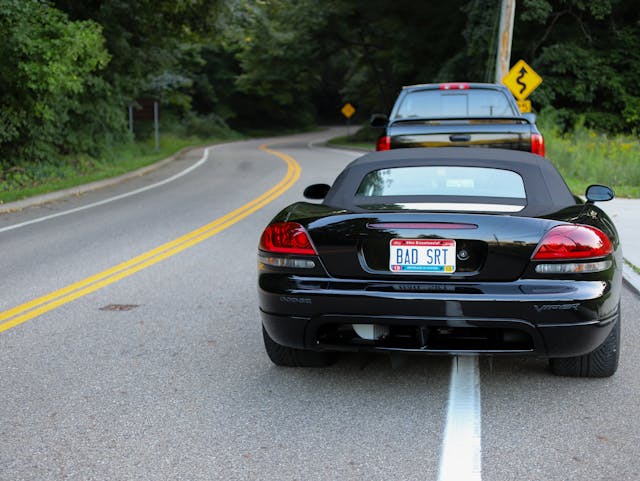
***
Check out the Hagerty Media homepage so you don’t miss a single story, or better yet, bookmark it. To get our best stories delivered right to your inbox, subscribe to our newsletters.
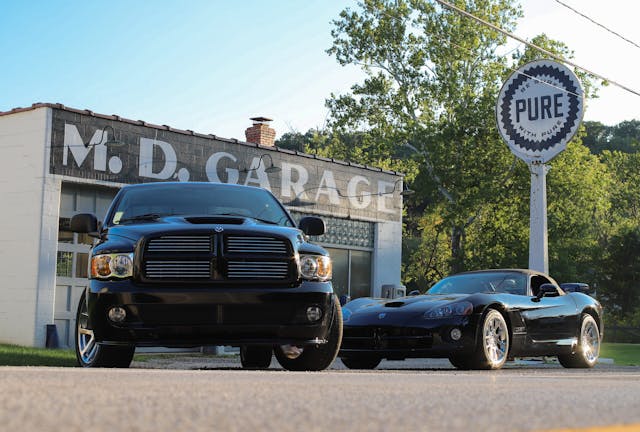
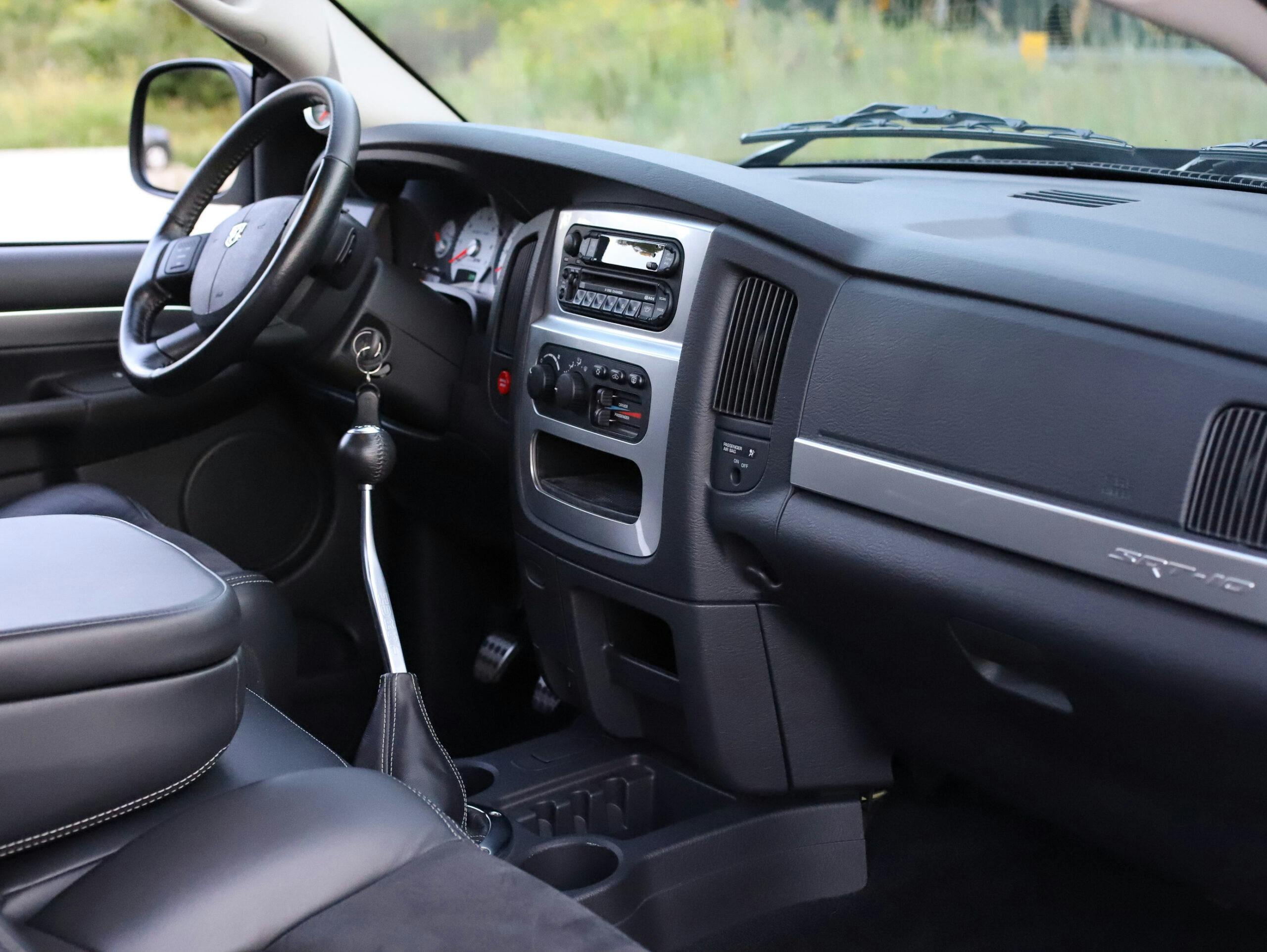
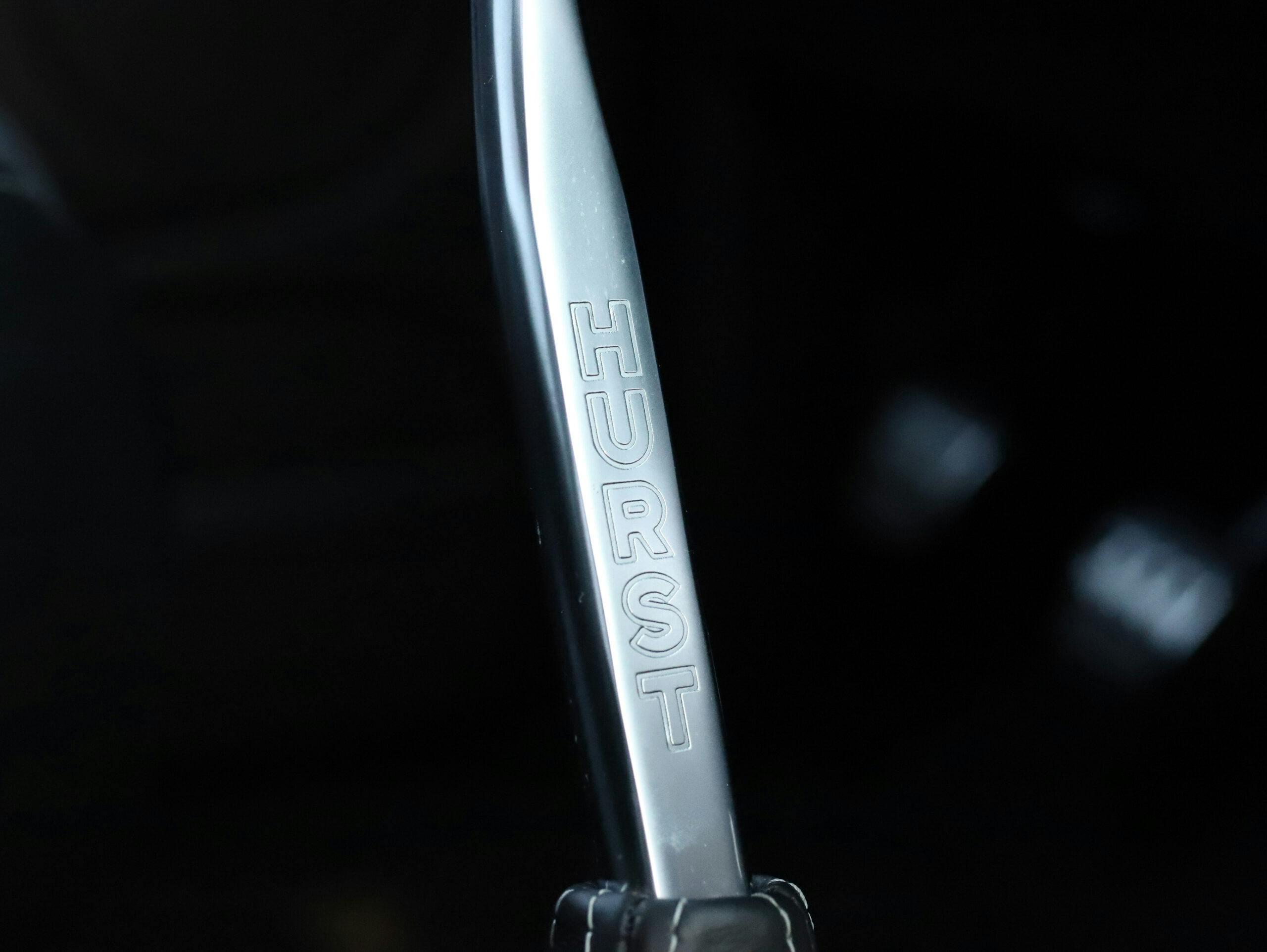

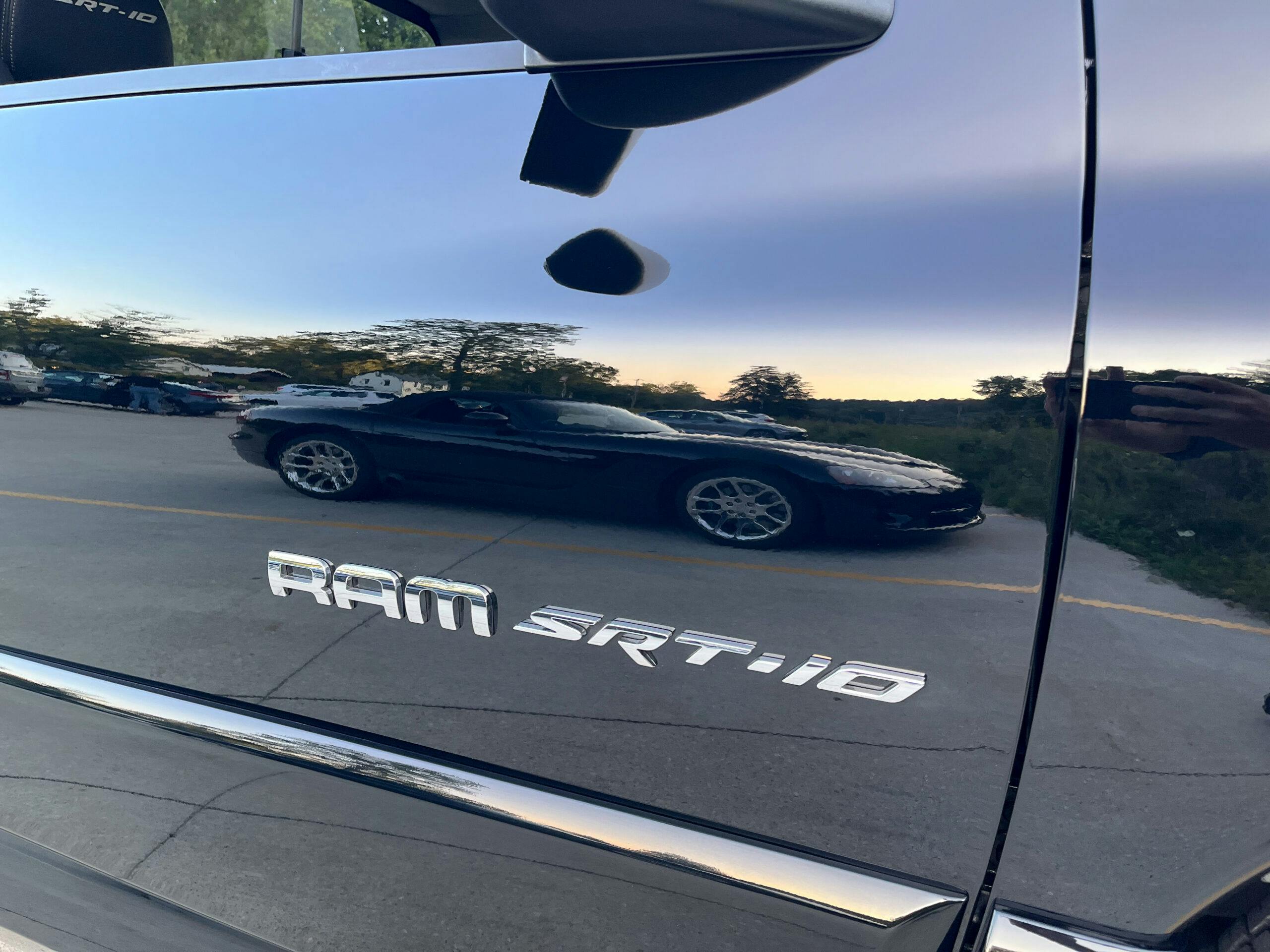
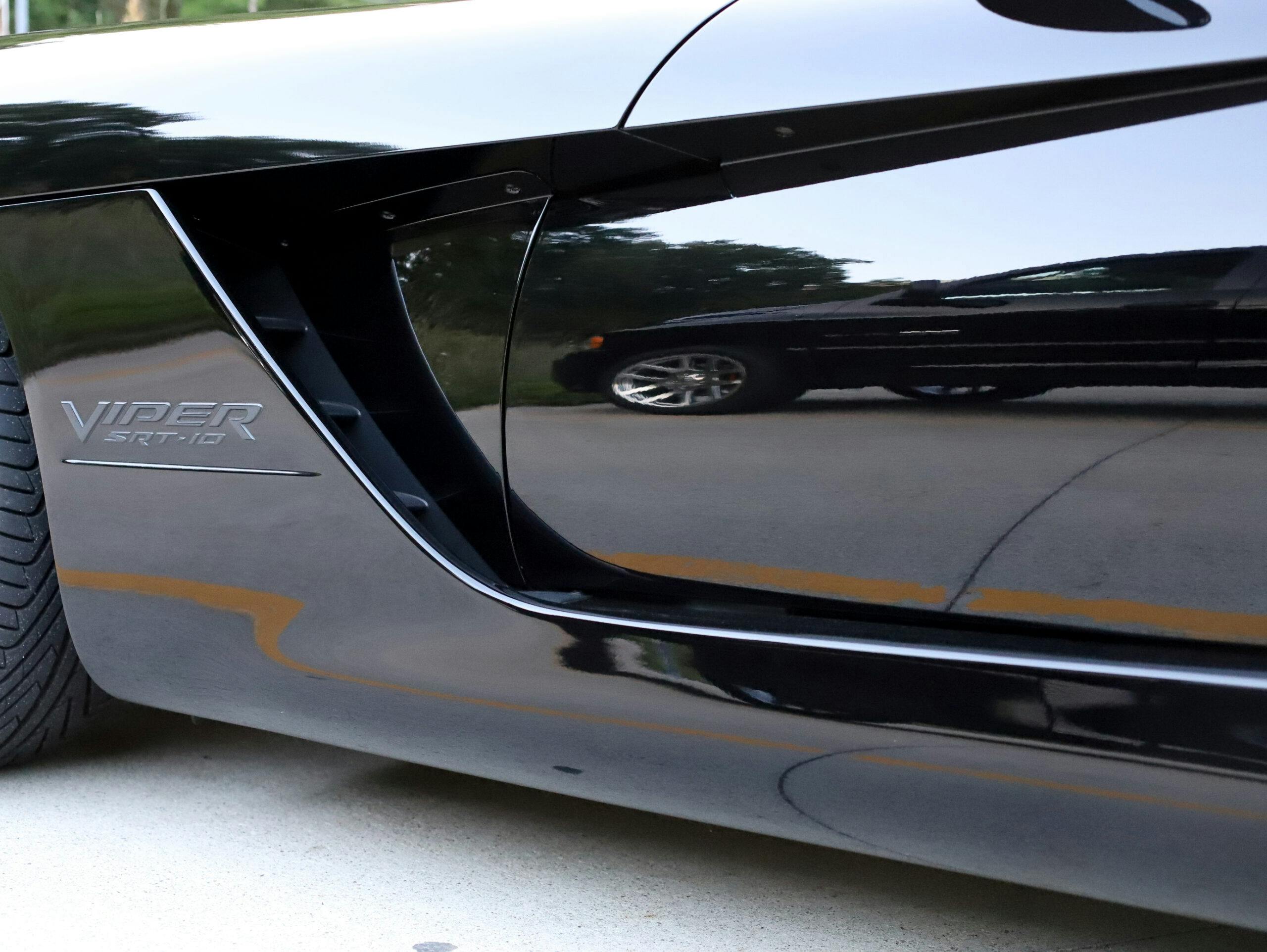

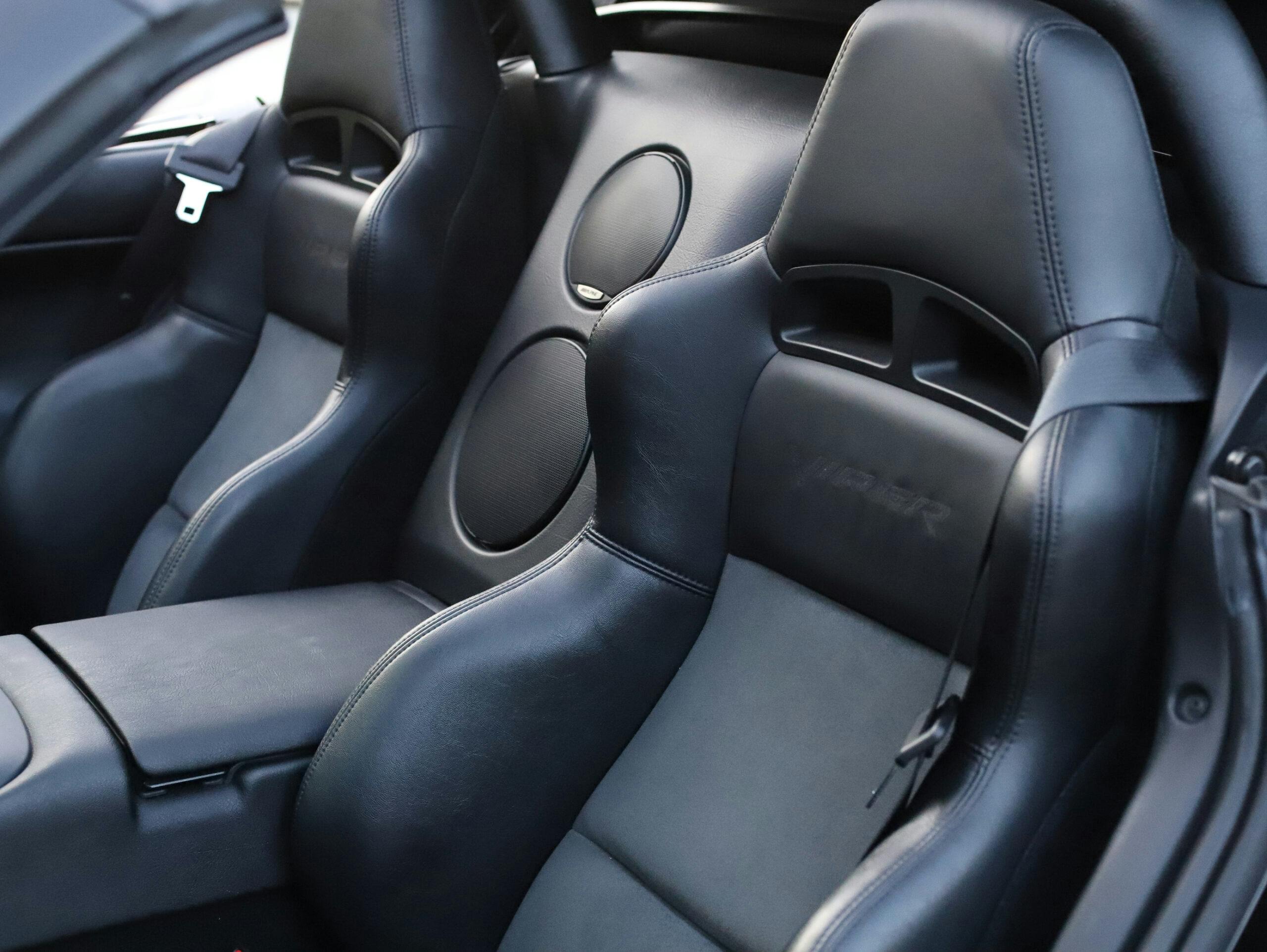


There was a time when those trucks weren’t too old and gas prices spiked that the Quad Cabs could be had for a song. I didn’t have the spare cash then, and I couldn’t have afforded all the gas and tires I would have burned up if I had, so it’s probably for the best.
Don’t kid yourself. Use all that power and in your own mind you might be Steve McQueen making a movie but to anybody else who sees you, you look just like the delivery boy for Domino’s Pizza.
I prefer Viper Coupes myself.
I’d like a Viper. Anyone want to trade an ok MGA and a fake Lotus 7 for one? Kidding… well, I’m not but… you know
I went to a DODGE dealer in Greenville Texas, considering all makes, in my quest for a new pickup. The dealer had a new silver, single cab SRT10 sitting out front. I had to look at it… and he MADE me drive it… and FLOOR it! Hooo-weee what a sound and blur of images out the window. If I remember right, it had a pistol-grip, long shifter,
I’ve thought many times about “what if”… but it really made no sense for me, since I put about 1000 miles a week traveling for my business. But… I could have gotten to the jobsite in record time!
Second gen GTS is peak Viper. Not performance wise, but Viper wise.
Those convertible Vipers are the best of all the generations, I think. Great looks, great performance, and the option to “convert” – which all two-seaters should have!